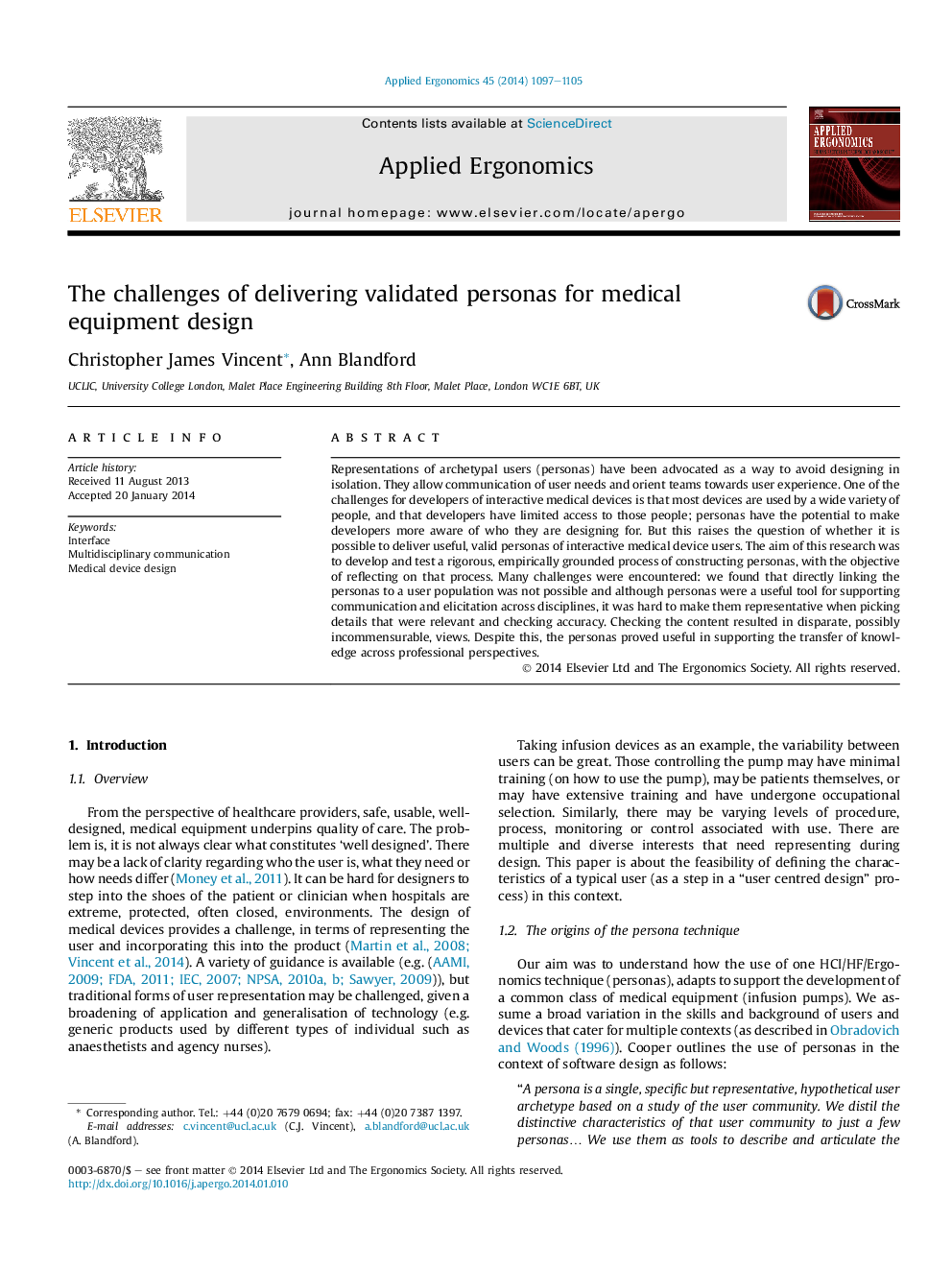| Article ID | Journal | Published Year | Pages | File Type |
|---|---|---|---|---|
| 10365898 | Applied Ergonomics | 2014 | 9 Pages |
Abstract
Representations of archetypal users (personas) have been advocated as a way to avoid designing in isolation. They allow communication of user needs and orient teams towards user experience. One of the challenges for developers of interactive medical devices is that most devices are used by a wide variety of people, and that developers have limited access to those people; personas have the potential to make developers more aware of who they are designing for. But this raises the question of whether it is possible to deliver useful, valid personas of interactive medical device users. The aim of this research was to develop and test a rigorous, empirically grounded process of constructing personas, with the objective of reflecting on that process. Many challenges were encountered: we found that directly linking the personas to a user population was not possible and although personas were a useful tool for supporting communication and elicitation across disciplines, it was hard to make them representative when picking details that were relevant and checking accuracy. Checking the content resulted in disparate, possibly incommensurable, views. Despite this, the personas proved useful in supporting the transfer of knowledge across professional perspectives.
Related Topics
Physical Sciences and Engineering
Computer Science
Human-Computer Interaction
Authors
Christopher James Vincent, Ann Blandford,
